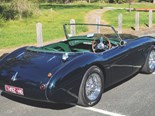Market Watch: Classy Eurobrit Coupes
Here are some Euro coupes that won't cause a budget blowout
Making a statement without spending a mint, can be tough in a market where vendors continue seeking premium prices for cars that are often ordinary.
Thinking creatively, we took a trip into the land of classy two-door coupes and found a diverse selection. Most come from the 1970s-80s, but one isn’t that old and offers plenty of car for sensible money.
All are relatively practical, with space behind the two main seats for a couple of pre-teen children and boots big enough to carry the weekly supermarket shop.
None qualify as bargain buys, but nor will they cost more than a lot of traditional classic models.
Finding parts for most of our selections won’t produce problems, with only one likely to test your ingenuity. Those not originating in Italy come with excellent spares support and a network of specialist repairers.
The advertised prices of these cars can vary significantly, and not always for explicable reasons. Distance travelled isn’t relevant, unless extremely low and well documented. The same goes for scarcity, unless an established market exists and big money is available, for excellent examples.
Prices can also reflect extensive restoration or mechanical refurbishing, but the work needs to be recent and come with receipts.
BMW 635CSi
1986-90
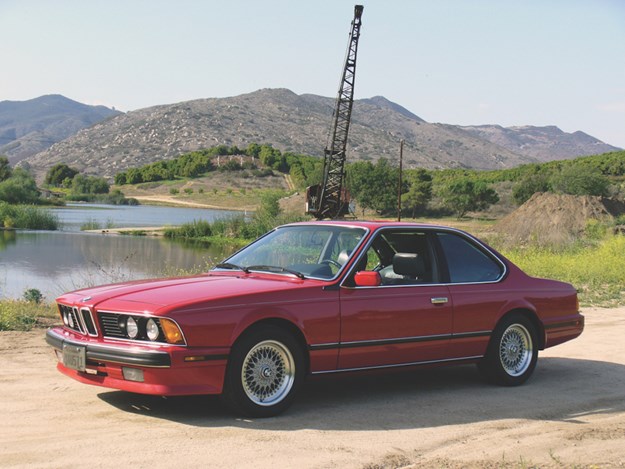
Image: BMW
The 635CSi didn’t officially sell in Australia until 1986, with the introduction of unleaded fuel. However, personal imports had already ensured these classy coupes were seen on our roads and race circuits. Five-speed manual versions were available until late 1988 and are less common than the four-speed autos Prices when new began at $113,000, yet four years later had risen to just $122,000.
With 1576kg to move and 136kW to do it, the CSi automatic is leisurely off the line but gets into its stride as speeds rise. Going from 80-120km/h in an auto should occupy around 5.4 seconds, with top speed for the manual, a claimed 220km/h.
These BMWs were built to the highest standards, but 35 years of Australian sun will see paint – especially metallic finishes – beginning to craze and fade. Interior plastics crack too, but it takes a lot of neglect to trash the leather or sometimes cloth seats.
Mechanically, there are no endemic problems with BMW’s straight-six or its ZF transmission and routine servicing of well-maintained cars shouldn’t involve horrific expense. Good 6 Series sold a decade ago at less than $25,000 and recovery didn’t begin until recently. Manuals are worth 30 per cent more than automatics but still rarely exceed $60,000.
FIAT 130 COUPE
1971-75
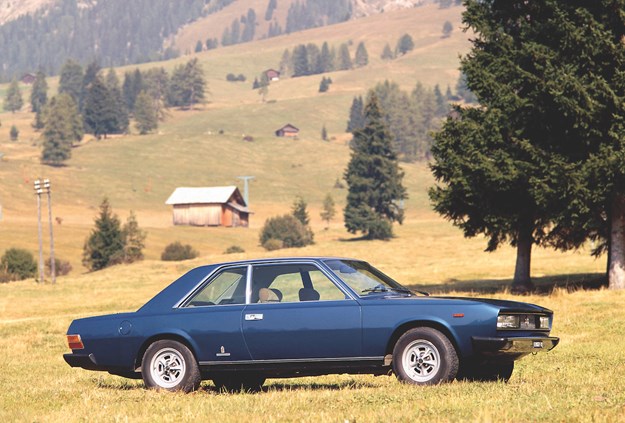
Image: Fiat
When Fiat set out to build a car that would target aspirational Ferrari owners, this was the result.
In place of the 365 2+2’s visceral V12 it had a V6, but one that still could claim a tenuous link to Ferrari, having been designed by former Ferrari F1 engineer Aurelio Lampredi.
Considering the V6’s heritage and sophistication, it was holding plenty in reserve when tuned to produce just 123kW. Most were hobbled further by initial owners who chose the three-speed automatic transmission over the five-speed manual, however people who tried a manual 130C, report it as a pleasant experience.
The body is by styling house Pininfarina and shared little with the frumpy 130 sedan. Inside was plush velour rather than leather, with timber on the dash and console. Electric windows were standard and air-conditioning available.
More than 4000 of the 130 Coupe were made, with some sources claiming that 500 of them came to Australia. Cars that spent their lives here from new do seem more resistant to rust, than those sold in Europe or the UK.
Given current depressed values, restoring a rusty 130C or one with a trashed interior isn’t viable. Good ones selling overseas make A$45-50,000, while here during 2023 there were two well-kept cars sold at auction for $34,850 and $34,250 respectively.
JAGUAR XJ-C 4.2
1975-78
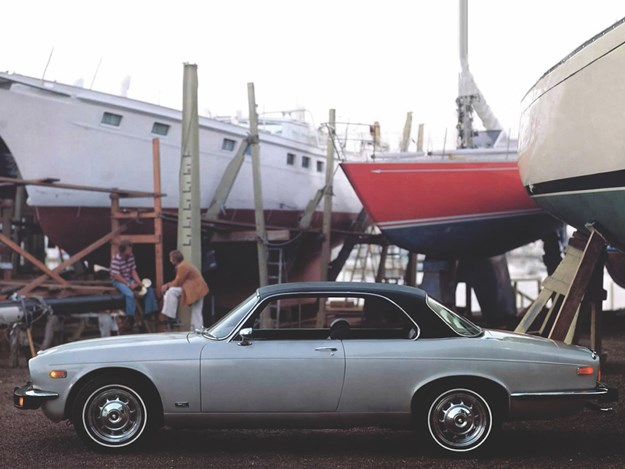
Image: Jaguar
Jaguar, during the era of Sir William Lyons built some beautiful cars and the XJ-C must rank with the best. Initially intended for launch alongside the Series 1 XJ12 sedan, the Coupe didn’t appear until 1975, because its pillarless windows proved almost impossible to seal.
All bar the prototype were based on Jaguar’s XJ6 Series 2 and suffered the same electrical and quality issues. Virtually all the
XJ-Cs will by now have undergone some restoration and had some problems eliminated, but be prepared for the odd niggles.
Performance with the 4.2-litre engine and three-speed Borg Warner automatic is sluggish, but for those who don’t mind putting authenticity to the sword there’s room in the XJ engine bay for triple carburettors. Also loads of space under the tunnel for a Jaguar or proprietary-built five-speed manual.
Local sources suggest that 140 from the total 6487 XJ-C 4.2s were originally imported to Australia. Others have since arrived as personal imports, while surviving V12 cars are thought to number around 50.
Values for 4.2 versions peaked during 2022 when an outstanding car was sold at $77,000. Quality is important though, because it was followed less than a year later by a tatty car at just $17,000.
MERCEDES-BENZ CL500
2001-10
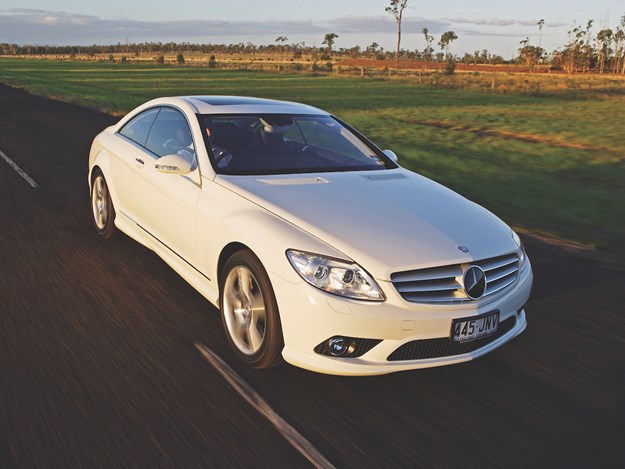
Image: Mercedes-Benz
Housebrick in a Gucci handbag, this one. Viewed from any angle the CL500 is all class, with sleek curves and luscious leather. Then under a ridiculously long bonnet sits sufficient pipework to excite NASA and 285kW from a sophisticated 5.5-litre V8.
New in 2008, the updated CL500 cost $323,900, and that was before any assistance from the extensive options list. These were a car that required serious wealth to acquire and plenty of ongoing outlay to maintain.
Most will have been treated well and serviced by the book, so after 15 years and relatively small distances travelled, it is inexplicable why good cars end up in the market at $35,000 and better ones sit unsold for months at $60,000.
Quite possibly there is some reverse snobbery at play. People who are happy to spend the cost of the Benz on an HSV or old Mustang perhaps fearful of reactions within family and friendship groups to such a display of opulence.
Active Body Control as fitted to CL Series and some other Benz models was a terrific idea, but with the potential to get costly as components age and fail. Ensure when looking at a CL500 that the car sits squarely without any drooping corners. Even if it displays no symptoms, pre-purchase assessment by a specialist is sensible.
PORSCHE 928S/928 S4
1981-88
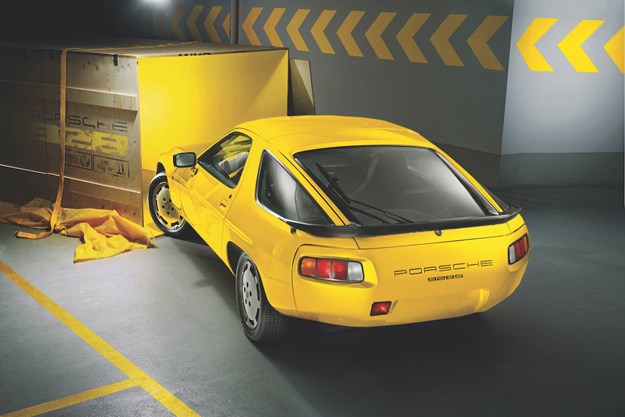
Image: Porsche
Porsche tried for decades to find a design that dedicated owners would accept in place of the iconic 911. They are still looking.
What the quest did deliver was some fine front-engined product including the 944 Turbo, 968 Clubsport and late-series 928.
The 4.7-litre 928S was released to Australia during 1980 and cost $25,000 more than a 3.0-litre 911. The brutish looking coupe was almost a 2+2, with just enough space in the back for two adults on a short trip.
Launch of the 928 S4 coincided with Australia’s switch to unleaded fuel, so output from the S4’s 5.0-litre engine remained at 235kW. A five-speed manual transmission was available, but cars found in the used market seem invariably to be automatic.
The difference in price when new between a 928S and 928 S4 was extreme - $91,105 in 1984 against $204,165 in 1987 and utterly unjustified. If you bought an S4 new you are still decades away from recouping your money, while the owner of a low kilometre 928S is getting close.
Exceptional 928s can now exceed $70,000, but the majority sell below $50,000. Unless you are a Porsche mechanic, steer clear of cars with serious mechanical conditions, as repairs are complex and costly.
Unique Cars magazine Value Guides
Sell your car for free right here
Get your monthly fix of news, reviews and stories on the greatest cars and minds in the automotive world.
Subscribe

.jpg)









.png)
